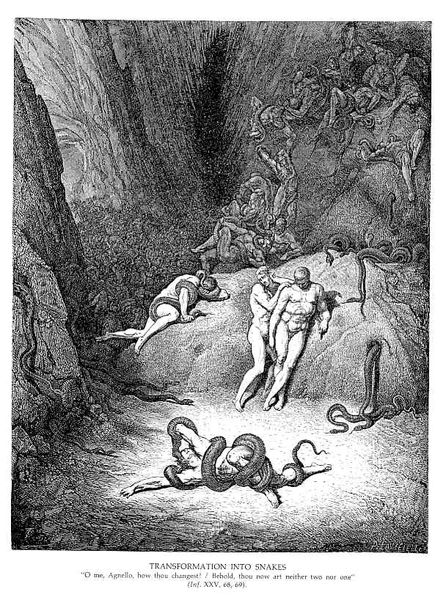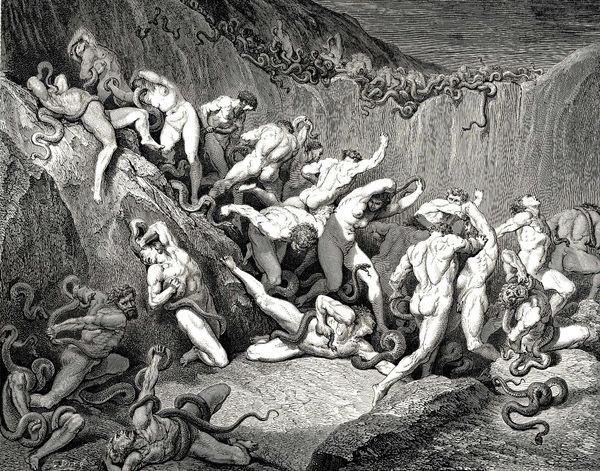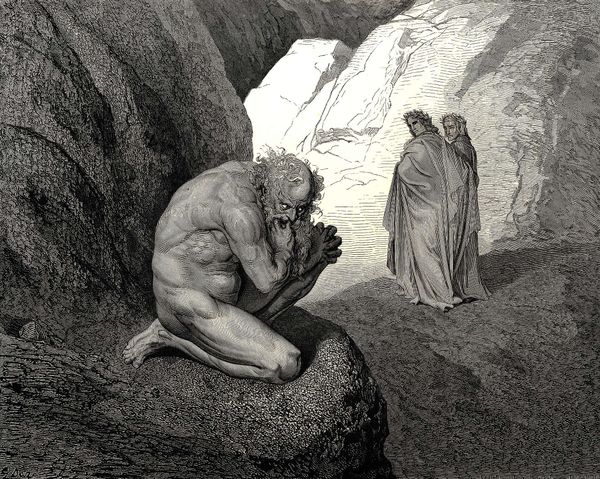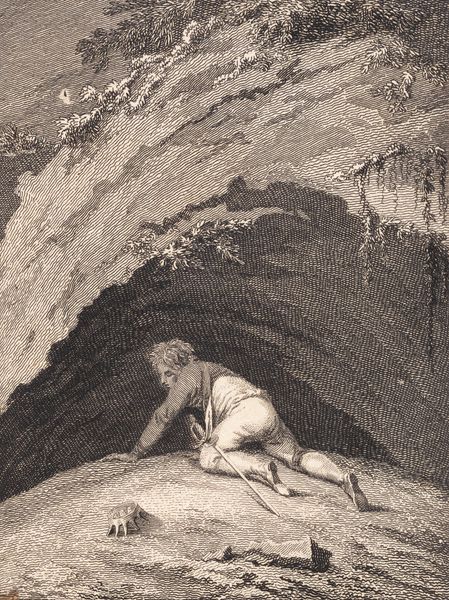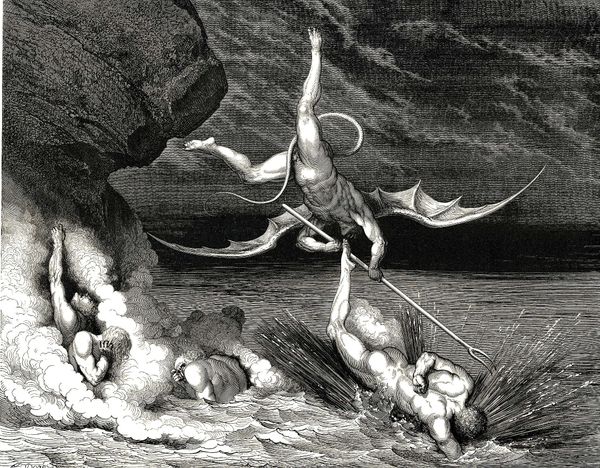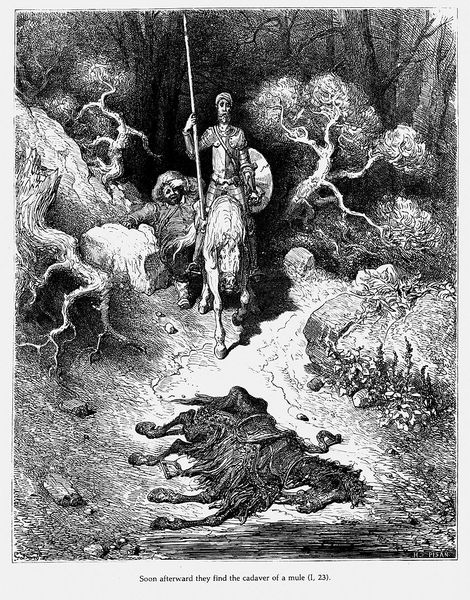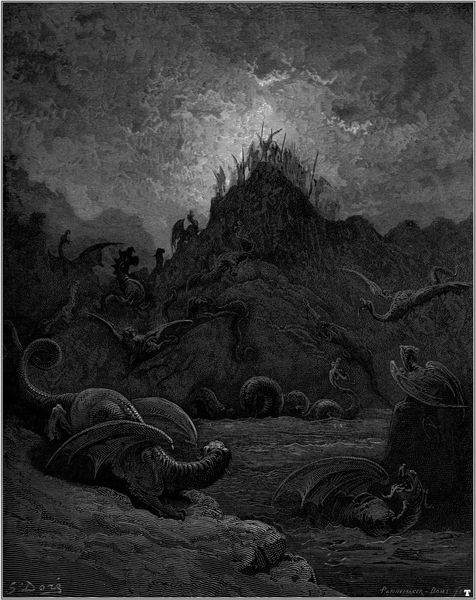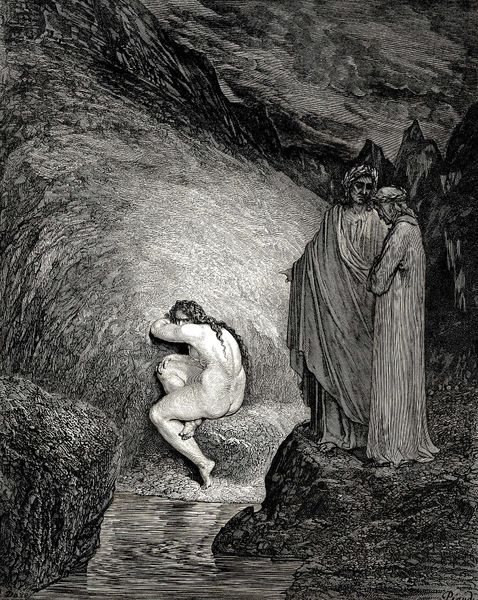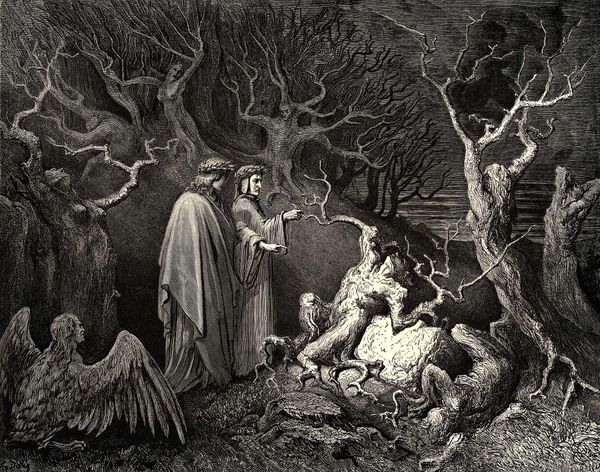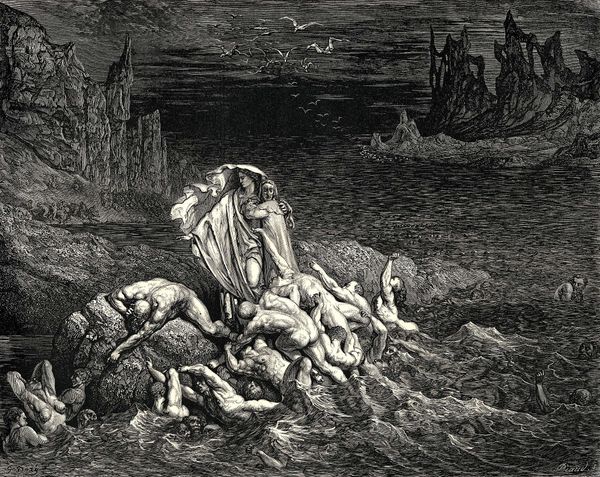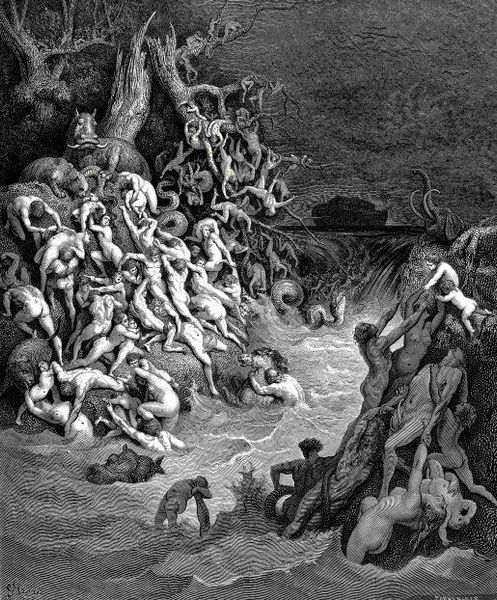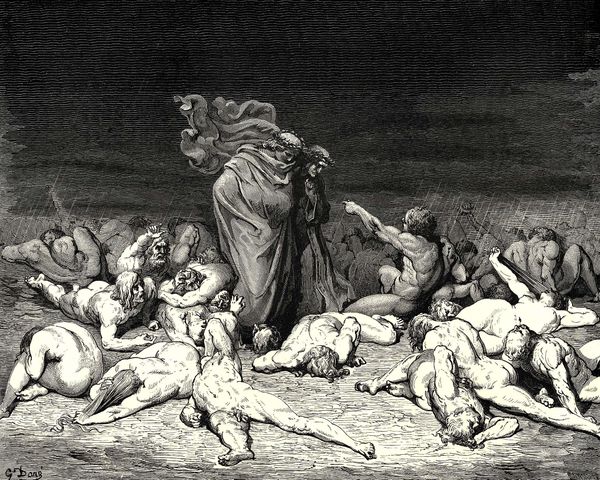
drawing, print, ink, engraving
#
drawing
#
narrative-art
# print
#
charcoal drawing
#
figuration
#
ink
#
romanticism
#
charcoal
#
graphite
#
engraving
#
monochrome
Copyright: Public domain
Editor: This engraving, "The Inferno, Canto 30" by Gustave Doré, depicts a chaotic scene with figures and snakes rendered in great detail using ink. It feels very intense and disturbing. What do you see in this piece? Curator: This work offers us a potent visual representation of Dante's Inferno, reflecting a 19th-century obsession with the darker aspects of human nature. I am struck by Doré’s exploration of punishment and transformation. Consider how the monstrous figures and entwined bodies could be read through a Foucauldian lens, representing societal power structures at play, punishing transgression and shaping identity. Editor: So, you see the image relating to how societal power is applied in that era? Curator: Precisely. Romanticism, which defined the era of Doré, often embraced subjects that questioned Enlightenment ideals of progress and reason. This piece embodies that perfectly. Do you think Doré offers any glimpse of hope, of possible resistance, or is it simply a bleak panorama of societal and personal doom? Editor: It's hard to see any hope here, just writhing bodies and snakes. The overwhelming sense is definitely doom. It also seems as if they have transformed into monsters themselves. Curator: Yes, and it's interesting to consider what "monstrous" means in a context where society itself might be considered monstrous. Editor: That's a perspective I hadn't considered. I'm starting to appreciate the historical and theoretical lenses through which art can be interpreted. Thanks. Curator: Indeed, it invites us to question our contemporary society, which may be as wild and terrible as Doré's engraving!
Comments
No comments
Be the first to comment and join the conversation on the ultimate creative platform.
